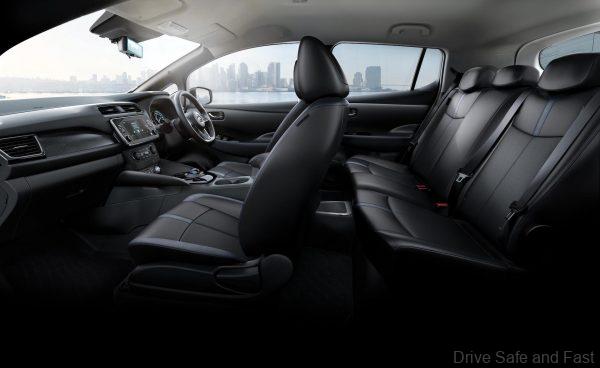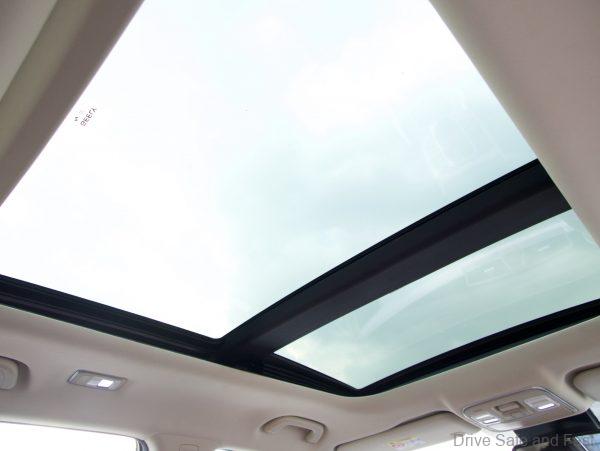If you’re shopping for an EV, you’ll notice that panoramic glass roofs are fairly common. But why is that?
The most popular electric vehicles in Malaysia are BYDs and Teslas, and every single one of these models (except for the base Dolphin variant) comes with a panoramic glass roof—without even an electric sunshade. This is puzzling for a few reasons:
- EVs are supposed to be high-tech, yet the sunshade has to be manually fitted or removed.
- Panoramic sunroofs are ill-suited to Malaysia’s hot and sunny weather.
- They indirectly reduce real-world range because the climate control system has to work harder, consuming battery power.

Let’s dive into the situation to get a more complete picture, but before we continue please note that we’re using ‘glass roof’ and ‘sunroof’ interchangeably. If you want to be a prude about it, sunroofs would indicate that at least one portion of the glass can be slide open. Glass roofs are fixed, and these tend to be the norm. Just for this article, assume the two are the same – boot the dashboard glass.

Not All EVs Have Panoramic Sunroofs
First, it’s important to note that not all electric vehicles come with panoramic sunroofs. For instance, we recently tested the forgotten second-generation Renault Zoe via GoCar.

This fully electric vehicle does not have a sunroof. Similarly, the second-generation Nissan Leaf doesn’t appear to feature one either. Both of these models, by the way, are available at relatively affordable prices on the used market.

Even among Chinese EVs, panoramic sunroofs aren’t universal. The base model BYD Dolphin we mentioned earlier doesn’t include one, nor does the Neta V.

EVs Aren’t Engineered for Malaysia’s Climate
Another key factor is that no EV is engineered with Malaysia’s unique climate in mind. The largest markets for electric vehicles are the USA, China, and Europe/Japan—regions where temperate climates dominate, and extreme heat and sunshine are exceptions rather than the rule.

When Malaysia opened its doors to excise duty-exempt EVs, global automakers responded swiftly. However, they rarely made any significant adjustments for Malaysia’s hot and humid climate. Even locally assembled EVs don’t omit panoramic sunroofs.
Why Do Panoramic Sunroofs Persist?
The simplest explanation is that many EVs come with panoramic sunroofs as standard. Tesla, for example, has made panoramic glass roofs standard across all its models, including the Model 3, Model Y, and Model S. This approach is common for many EV manufacturers.

But there’s also a local factor to consider: in Malaysia, panoramic sunroofs have long been associated with luxury.
A Legacy of Luxury
Decades ago, a sunroof—let alone a panoramic one—was a symbol of exclusivity. It often signified a fully imported, European-market vehicle, typically from a premium brand. Back then, a sunroof implied superior rollover protection, as the manufacturer had to engineer a car strong enough to accommodate such a design.

Owning a vehicle with a panoramic sunroof in Malaysia also signaled excess. It was often covered during day-to-day use, but the mere fact of having one said, “I don’t need this, but I can afford it.”

Today, the definition of luxury has evolved, but the association with panoramic sunroofs remains. Non-premium brands have now mastered the engineering techniques pioneered by premium brands, making these features widely available—even Proton offers them with help from their partners.

Why Most EVs in Malaysia Have Panoramic Sunroofs
For EV manufacturers, panoramic sunroofs represent a single piece of equipment that conveys ambition and luxury to the casual car buyer. Ironically, it would cost manufacturers more to retool for solid metal roofs better suited to Malaysia’s climate than to simply include glass roofs as standard.

Given the small volume of EVs sold in Malaysia and limited demand for metal roofs, this isn’t likely to change anytime soon.

In short, while panoramic sunroofs may not be ideal for Malaysia, they persist due to a mix of global manufacturing practices and local perceptions of luxury.